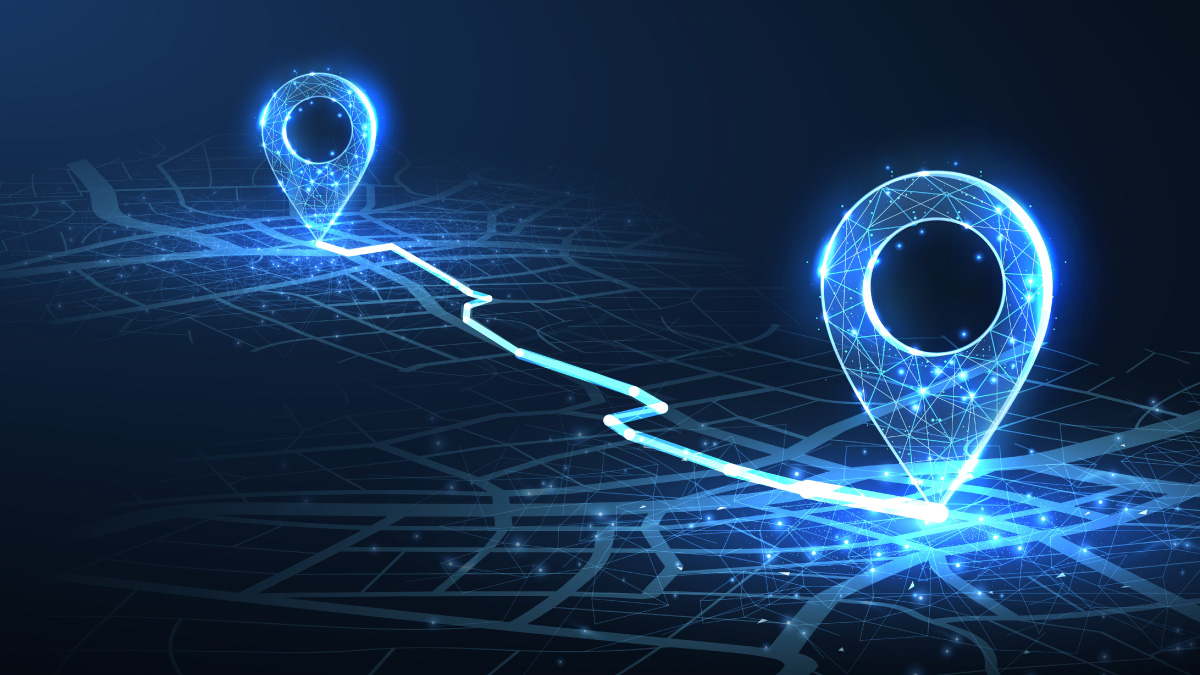This linear process appears straightforward enough, however, the buyer’s journey is very rarely a straight line from awareness to decision. It’s important to remember that the relationship you begin at the awareness stage with the buyer is fluid. Buyers may skip stages, get to the next phase and decide they need to return to the previous step, or even get to the decision stage only to determine they need to return to the awareness stage as a vital pain point wasn’t included in the initial problem statement. To help promote a linear buyer’s journey, a buyer’s journey map is an invaluable tool.
Customers rarely, if ever, buy on a whim – especially if it’s a high dollar purchase. However, this is the point in time when the buyer’s journey begins. But what is the buyer’s journey, and what are the stages associated? We’ll dig in and also share some buyer’s journey examples – from both a B2B and B2C perspective.
What is the Buyer’s Journey?
Sometimes referred to as the purchasing journey, the buyer’s journey describes the process buyers go through to purchase the product or service that will best fit their need(s)/resolve their issue(s). It includes all decisions, actions, and interactions starting from the point when a prospect identifies a pain point to when they buy a solution.
It’s important to note that the B2B buyer’s journey differs from the B2C buyer’s journey. For instance, the B2B buyer’s journey involves purchasing a solution for the organization, where buying considerations include return on investment (ROI). Frequently, the sales cycle for B2B purchases are lengthier than that of the B2C customer journey. The B2C buyer’s journey typically has a shorter sales cycle, and purchases are many times based on emotion rather than receiving ROI.
Is the buyer’s journey the same as the customer’s journey? The short answer to this question is no. The buyer’s journey leverages the pre-purchasing steps a prospect goes through to ultimately make a buying decision. Alternatively, the customer’s journey consists of building and nurturing relationships for the purpose of customer retention and loyalty – think subscription-based businesses.
What are the Three Stages of the Buyer’s Journey?
The buyer’s journey consists of three steps: awareness stage, consideration stage, and decision stage.
Awareness Stage
The prospect is experiencing pain point symptoms, however they may or may not know the root cause or what is causing the issue. While the buyer may have done some research – typically online, they may not exactly know what is needed to resolve the issue.
What should businesses do at this stage?
The goal at this stage is to help the prospect gain a better understanding of the issue they are experiencing and to raise awareness of your business and the solution you provide. Tools that should be used include high level informative documents, ebooks, videos, blog posts, infographics, social media posts, case studies, and how-to guides, etc.
- B2B Example: Toby, a medium-size business owner is noticing an increase in configuration and pricing errors on outgoing quotations.
- B2C Example: Sarah, who is a freelance writer, is encountering laptop issues which are resulting in continuous reboots.
Consideration Stage
This stage marks the research stage of the process, where the buyer shifts their focus from general research to learning about and comparing various solutions.
What should businesses do at this stage?
During this stage, businesses can, subtly, inject that they have the best solution on the market. When doing this, be sure to provide reinforcement material such as analyst reviews and favorable solution comparisons. Additionally, use marketing tools that highlight the unique features, functionality, and benefits of your solution. Tools that provide the greatest impact during this phase include personalized emails, blog posts, demos, white papers, free trials, and other resources that clearly assess the advantages of your solution vs. the competition.
- B2B Example: Toby conducts online research, as well as speaks to colleagues regarding the issue. The initial research leads him to investigate further by reading configure-price-quote (CPQ) software articles/analyst reports and visiting vendor websites, from which he selects a handful of vendors to compare their solutions.
- B2C Example: With price and feature/functionality in mind, Sarah browses electronic store websites. Since each store has laptop models that will do the job, she expands her research to include customer questions and ratings, as well as takes a closer look at the features and functionality of each of the laptops under consideration.
Decision Stage
At this point, the buyer has most likely created a short list of potential vendors. They are now ready to focus their attention on finalizing details and addressing any remaining concerns. This is the stage where sales reps will take a more active role in turning the prospect into a customer. To this end, sales reps must go above and beyond to exceed the prospect’s expectations.
What should businesses do at this stage?
Tools that should be used during this stage include customized communications, proposal documents, data sheets, comparison articles/blogs/analyst reports, case studies, ROI calculations, demonstrations, and buying guides. In addition, this is the time to be reassuring and persuasive that your solution is the best fit for the buyer’s pain points. Finally, it’s imperative that the purchasing, invoicing, and payment process be easy and accurate.
- B2B Example: After narrowing the selection down to 2 CPQ solutions, a sales rep from each of the companies visit Toby for an in-depth demonstration, answer any remaining questions, and respond to any lingering concerns. After a few days, Toby makes his decision, selecting a CPQ software solution that provides unified and seamless quote-to-cash functionality.
- B2C Example: After carefully weighing her options, Sarah places an online order for a laptop that not only meets her needs today but has the features and functionality that will take her into the future.
Mapping the Buyer’s Journey
This linear process appears straightforward enough, however, the buyer’s journey is very rarely a straight line from awareness to decision. It’s important to remember that the relationship you begin at the awareness stage with the buyer is fluid. Buyers may skip stages, get to the next phase and decide they need to return to the previous step, or even get to the decision stage only to determine they need to return to the awareness stage as a vital pain point wasn’t included in the initial problem statement. To help promote a linear buyer’s journey, a buyer’s journey map is an invaluable tool.
Used as a visual representation of the buyer’s experience with the company, a buyer’s journey map is many times created as an infographic. There are 7 key steps in creating a buyer’s journey guide.
Step 1: Know your target audience
Creating detailed buyer personas for all groups in your target market is the best way to do this. The buyer personas should include role/responsibilities, top obstacles/challenges, key vendor selection criteria, success measurements/key performance indicators (KPIs), demographics, psychographic factors, motivations, and behaviors. Gather data from social media, surveys, focus groups, Google analytics, interviews, etc.
Step 2: Determine buyer touch points
A touchpoint is any interaction between the buyer and your company, including website visits, speaking with a sales rep, viewing a social media post, or reading product reviews.
Step 3: Identify important buyer persona challenges
Leveraging information acquired from the first 2 steps, determine the obstacles and pain points your buyers are encountering. Do this for each of the buyer personas created.
Step 4: Explore possible solutions
Determine what solutions will help to alleviate the buyer’s challenges. Research during this step needs to include not only your solutions but those of the competition as well.
Step 5: Align marketing, sales, and content to actions
Using the insights gathered, align all the ways a buyer can interact with your company, both digitally and physically. Be sure to map out content and personal interactions for each of the stages in the buyer journey. The list may include social channels, marketing campaigns, events, websites, emails, advertisements, webinars, online surveys, videos, printed and digital marketing material, product packaging/bundles, third-party reviews, brick-and-mortar stores, and much more.
Step 6: Organize the content
Organize the content in a spreadsheet, infographic, or other visual representation. To begin, use the 3 stages of the buyer’s journey to map customer actions, touch points, content, personal interactions, etc. to each stage of the buyer’s journey.
Step 7: Test and refine
Once your buyer journey map is complete, take it for a test run. If you notice area’s where the prospect abandons their journey, return to this stage, brainstorm with colleagues, and make adjustments. Refinements should also consider buyer feedback, changing market trends, new or updated marketing material to fill gaps, etc.
As you go through the process, keep in mind that a buyer journey map helps businesses understand what buyers are experiencing and provides insights on how to improve the overall journey.
Improve Marketing and Sales Outcomes
Understanding the buyer’s journey is essential to take an unknown prospect to a loyal customer. This blog provides some of the basics to help you create a buyer’s journey. While there are many moving components to this process, one thing remains constant – the need for software to help reduce manual effort and provide accuracy.
BillingPlatform provides the software you need to create proposal documents, accelerate the purchasing process, create accurate and timely invoices, and simplify the payment process. Our team of experts is ready to help you, just get in touch with us today!



